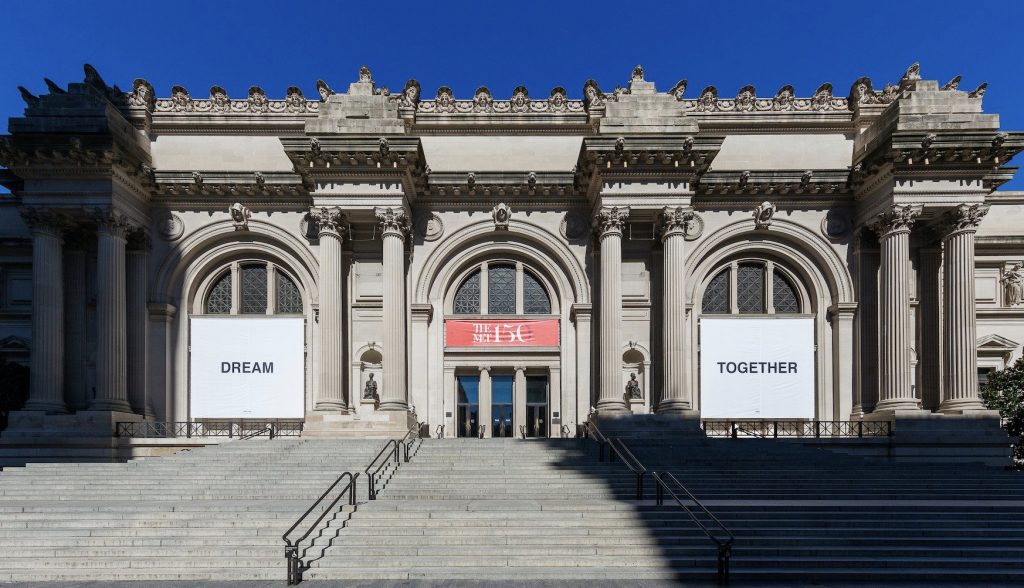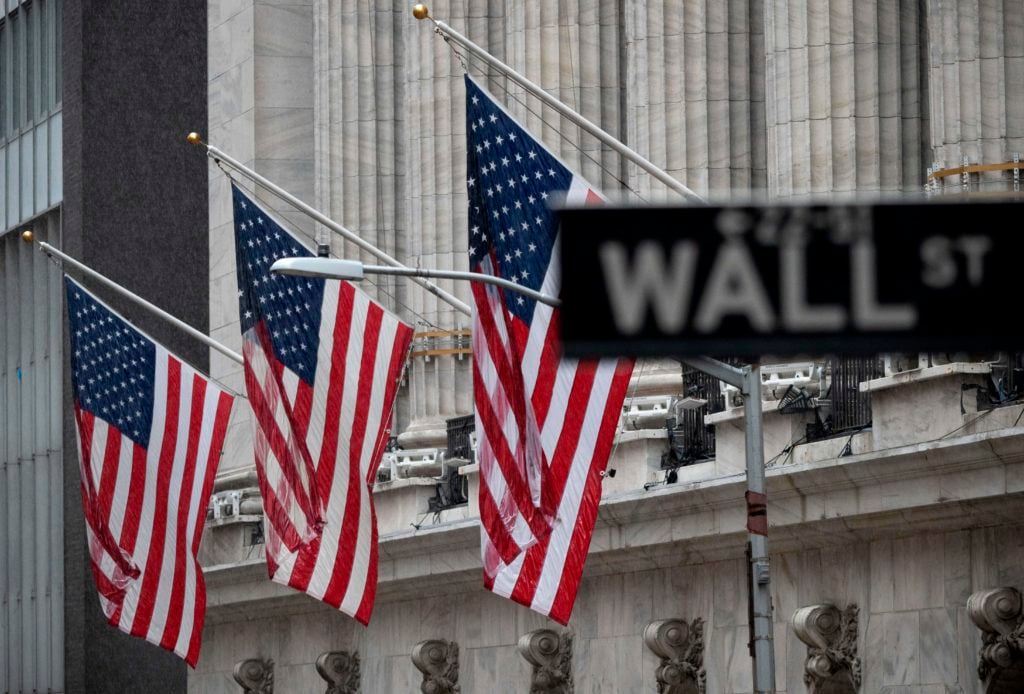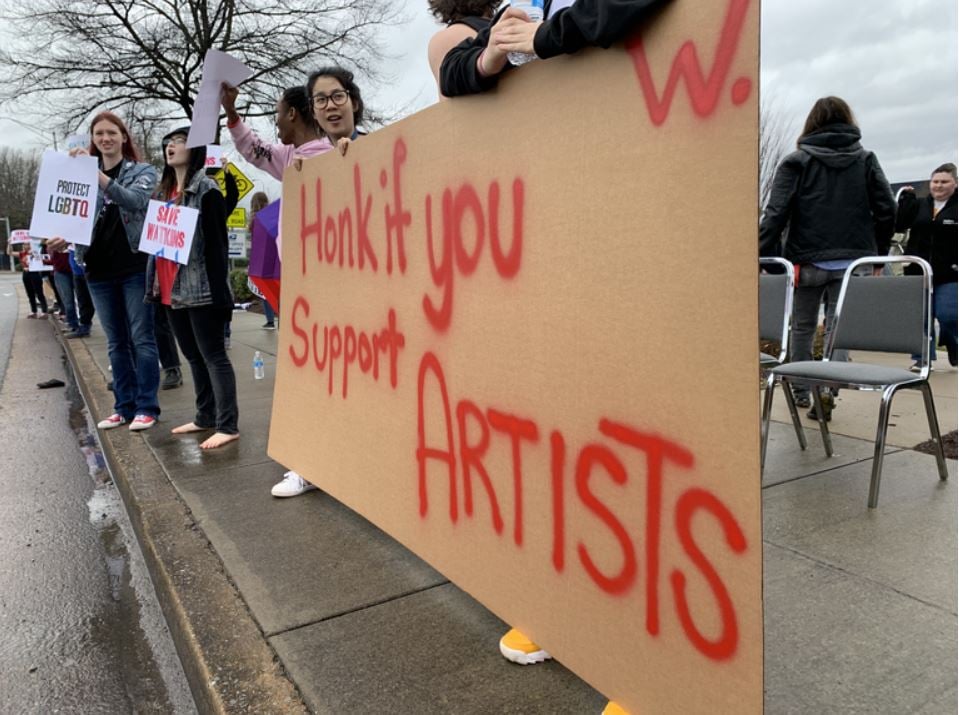Opinion
The Gray Market: Why New York’s Museum Pay Gap Tells a Story of American Decline (and Other Insights)
Our columnist unearths a jarring symbol of how far some of the US's top museums have wandered into cutthroat corporate territory.

Our columnist unearths a jarring symbol of how far some of the US's top museums have wandered into cutthroat corporate territory.

Tim Schneider

Every Monday morning, Artnet News brings you The Gray Market. The column decodes important stories from the previous week—and offers unparalleled insight into the inner workings of the art industry in the process.
This week, comparing the director’s office to the corporate C-suite…
On Tuesday, Robin Pogrebin of the New York Times took stock of the pay cuts accepted by some of New York’s top museum officials in response to the Great Lockdown of 2020. Contextualized alongside criticism over the layoffs and furloughs of more vulnerable workers at some of those same institutions, the piece becomes a microcosm of the stark compensation disparity plaguing the American museum sector. Yet as troubling as the gap between the apex of the institutional hierarchy and the rest of the workforce is, it’s also just another area where the art economy follows in the footsteps of the larger American economy.
What kind of pay cuts did some of New York’s top museum officials agree to in the face of the shutdown? On the high end, Asia Society president and CEO Josette Sheeran took a 50 percent reduction after earning $937,000 in 2019. On the low end, Metropolitan Museum of Art president and CEO Daniel Weiss took a 20 percent cut… and I’d say that figure is offset substantially by the fact that his salary rose by 24 percent between 2018 and 2019, to $1.25 million, after he took on the added responsibilities of chief executive in the wake of former director Thomas Campbell’s departure. By my math, that means he’s actually still up four percent over the past few years.
(A Museum of Modern Art spokesperson confirmed that Glenn Lowry—the city’s most handsomely compensated museum director, who earned $2.3 million in 2019 even without accounting for a “onetime infusion of $3 million in retirement plan payments”—accepted a salary reduction of an undisclosed size.)
Still, these thick paychecks only tell half the story. More relevant than top officials’ salaries are how they compare to those lower down on the org chart. From various museums’ 2019 tax filings, Pogrebin found that “leaders of a half-dozen major institutions in New York received annual pay packages last year of $1 million or more, even as low-level employees earn as little as $35,000.” If you run an executive-to-lowest-paid-worker ratio with these figures, you land at roughly 29 to one.
For a more specific example, Pogrebin also reports that the New Museum union recently negotiated a base salary of $46,000 for full-time staff; director Lisa Phillips’s annual take-home pay in 2019 was $768,000. Those figures deliver a pay ratio of about 17 to one.
(Phillips took a 30 percent pay cut in response to the lockdown, while the New Museum furloughed 41 workers. Twenty-three of those staffers were recently hired back; the other 18 have been permanently laid off. The union also filed a complaint with the National Labor Relations Board arguing that the cuts were “discriminatory and retaliatory” and aimed to short-circuit labor-organization efforts at the institution. Phillips has stated that she and the rest of New Museum management “don’t believe this charge has merit.”)
Those pay ratios sound kinda ugly, right? Well, if you think so, I’ve got some bad news for you about the American for-profit sector.

US flags in front of the New York Stock Exchange (NYSE) on Wall Street in New York City. Photo: JOHANNES EISELE/AFP/Getty Images.
About midway through her piece, Pogrebin laces in this line as part of the explanation for the salary disparity at New York’s elite art institutions: “In addition, many trustees are also highly compensated chief executives, for whom the pay level of a museum director may not register as significant compared to their own earnings.” Although she doesn’t provide any reference points in her piece, a separate study released the same day does.
The left-leaning Economic Policy Institute (EPI) recently published an in-depth analysis of CEO compensation at the 350 largest companies in the US. It found that the average pay ratio between chief executives and median workers in 2019 was a toe-curling 320 to one—an order of magnitude more extreme than at some of the Empire City’s richest art museums.
The big difference is that the EPI’s study looked at “realized” compensation measures that take into account the stock awards and options included in corporate CEOs’ pay packages. These perks commonly make up about 75 percent of taxable income for top execs at major public companies, per the EPI. Obviously, it’s not as if director Richard Armstrong gets some kind of equity interest in the Guggenheim, or ownership of some number of works in its permanent collection. This makes it all but impossible for even the best-paid museum officials to compete with private-sector elites.
Yet the CEO pay gap wasn’t always this severe, even at the biggest for-profit companies in the country. Using the same techniques, the EPI found that the pay ratio at the biggest for-profit companies in the country was only 61 to one back in 1989… and, in a previous analysis, that it was 20 to one in 1965.
Remember the 17-to-one pay ratio between director and base-salary employee in play at the New Museum before the shutdown, and the 29-to-one ratio I calculated from Pogrebin’s generalized example about New York institutions? Combined with the EPI analysis, they mean that some of the city’s top museum directors were out-earning their lowest-paid workers by about the same amount as chief executives at the US’s largest corporations were out-earning their median employees 55 years ago. That, dear reader, is one hell of a sign of the times.

Students from the Save Watkins coalition protesting the takeover of the school by Belmont University. Image courtesy Save Watkins.
Now, I should emphasize that the comparison I just made is a slightly muddy one. A museum’s median salary—meaning half its workforce earns less than that amount, and half earns more—should be higher than its base salary. But unlike executive compensation, median salaries do not show up in tax returns, and I did not try to see if I could get any of the New York museums in question to volunteer them.
So an apples-to-apples comparison to the EPI’s study should make institutions look somewhat better. For instance, if the median salary at the New Museum was actually $60,000, then in 2019 Phillips would only have been out-earning it by a ratio of about 13 to one, not 17 to one.
Is the acme of the American nonprofit-art economy less ethically warped than the corporate one in 2020, then? Definitely. But these figures suggest that it’s still not much of an achievement to gloat over. It would be sort of like tsk-tsking thieves craven enough to rob single parents while you cat-burgle an elderly couple’s jewelry chest.
An executive-compensation consultant crystallized the real issue in a Washington Post report on last week’s EPI study: “If a median worker feels prosperous and that they’ve been treated pretty well, they’re fine with the CEO taking home millions upon millions… The problem is when the median worker is no longer feeling prosperous.”
It’s safe to say we’re well beyond that point both inside and outside the museum sector. The EPI calculates that, between 1978 and 2019, CEOs’ annual earnings swelled 1,167 percent and the rest of the wealthiest 0.1 percent saw their annual income rise 337 percent. Meanwhile, the average full-time worker took home less than 14 percent more than their counterpart 40 years earlier.
I’ll spare you the diatribe about how we as a society reached this shameful crossroads. If you’re not already well versed in the unholy forces unleashed by decades of regressive tax policies, globalization, structural discrimination, automation, short-termism, and more… IDK man, maybe start by reading this, because there’s no way I can cover it in a paragraph or two.
What matters here is that, to outsiders especially, the ideals that define the art world in the popular imagination are the ideals pursued and actualized primarily by the least powerful people: emerging and/or underappreciated artists, small galleries, underpaid arts workers, and others who are struggling to meet their most basic needs while pursuing truth, beauty, justice, community, and other gateways to transcending life lived primarily by status-quo expectations.
The growing disparities in money and power play out the same way in the arts as everywhere else in human existence. Too often, vulnerable labor gets exploited; pre-existing financial gain gets leveraged to unjust ends; and philanthropy gets used as a cloaking device for the precarity and inhumanity supporting the entire structure.
Until we make it otherwise, the art economy is just a microcosm of the larger economy. The art world is just a microcosm of the world.
The compensation chasm between top museum directors and their lowest-paid workers may not be the worst manifestation of this reality. But it’s another one that has been chiseled into hard numbers, demonstrating that the arts have not, in fact, cut a shining path away from the depressing direction of society at large. Now that the facts are staring us in the face, the question is: what are we going to do about them?
That’s all for this week. ‘Til next time, remember: there’s no time like the present, until there’s no time at all.